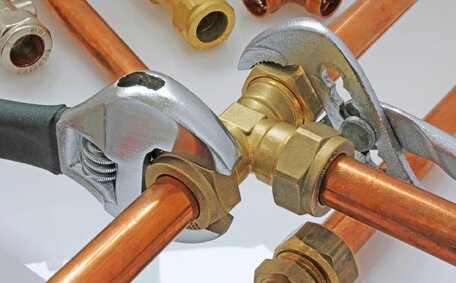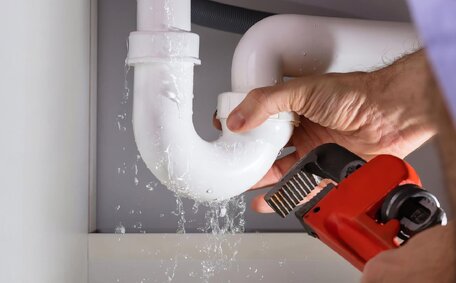Average Lifespan of a Gas Pipeline
Gas pipelines are typically designed to have a lifespan of around 50 years under normal operating conditions. Historically, gas pipelines were built to last much less than that, often only 25-30 years. However improvements in materials, construction methods, corrosion protection, and maintenance practises over the years have extended expected lifespans considerably.
Modern gas pipelines use high-grade steel and advanced protective coatings to prevent corrosion. They also utilise improved welding methods and leak detection systems. With proper maintenance and operating procedures, today’s gas pipeline infrastructure can reliably transport natural gas for 50 years or more before needing replacement.
At St Ives Plumbing, we stay up-to-date on the latest industry standards and lifecycle expectations for gas pipelines. This allows us to provide informed recommendations to our customers regarding their gas systems. If an ageing gas pipeline shows signs of deterioration, we can advise on replacement or abandonment options considering factors like usage levels and remaining lifespan.
Factors Influencing Gas Pipeline Longevity
There are several key factors that impact how long a gas pipeline can safely remain in operation before requiring replacement:
- Pipeline Materials - The durability and corrosion resistance of the materials used in pipeline construction are critical. Modern pipelines use advanced steel alloys and protective coatings that extend lifespan.
- Operating Stress - Excess pressure cycles, flow changes, and other operational stresses can fatigue pipeline materials over time.
- Environmental Conditions - Local soil, water exposure, and weather all affect pipeline corrosion rates. Even small leaks or cracks exposed to elements further reduce longevity.
- Maintenance Practises - Property pipeline testing, monitoring, repairs and corrosion management are vital for prolonging operational lifespans.
At St Ives Plumbing, we closely monitor developing corrosion or damage issues that may shorten a gas pipeline’s remaining functional years. This allows us to provide reconditioning services or recommend replacement when pipelines near the end of their safe working life after approximately 50 years.
Pipeline Materials and Their Impact
The materials used to construct a gas pipeline have a major influence on its durability and lifespan. Different materials vary in their natural corrosion resistance and ability to withstand operational stresses over decades of service.
Material Average Lifespan Best Suited For
| Carbon Steel | 50 years | Most standard gas pipeline applications |
| Stainless Steel | 100+ years | Highly corrosive environments |
| HDPE Plastic | 50-100 years | Lower pressure gas distribution |
| Fibreglass | 50+ years | Corrosive soil conditions |
At St Ives Plumbing, we recommend the most appropriate pipeline materials for each customer’s specific gas infrastructure needs and environmental conditions. This helps ensure new pipeline installations achieve a lifespan of 50 years or more before requiring replacement.
Maintenance and Inspections
Regular maintenance and inspections are vital for ensuring a gas pipeline would remain in safe working condition throughout its designed lifespan. Key tasks that should be conducted include:
- Corrosion Monitoring - Pipeline wall thickness testing every 3-5 years to detect metal loss from corrosion
- Leak Surveys - Annual survey of entire pipeline to detect even minute gas leaks
- Cathodic Protection - Regular inspection of corrosion prevention systems every 1-2 years
- Valve Exercises - Annual testing of critical valves to ensure functionality
- Cleaning/Pigging - Pipeline interior cleaning every 5-10 years to remove debris and improve flow
Conducting this basic gas pipeline maintenance regimen enables issues like leaks, blockages corrosion damage to be detected early and addressed. This significantly extends the safe working lifespan of pipelines to meet or exceed the 50 year design expectations.
At St Ives Plumbing, we offer complete gas pipeline maintenance and inspection services to provide our customers with peace of mind their systems remain in reliable, safe operating condition. Our expert technicians follow industry best practises to preserve pipeline integrity and longevity.
Decommissioning Pipelines
When a gas pipeline reaches approximately 50 years of age, it typically requires decommissioning if further use is not required. The key steps in decommissioning a pipeline include:
- Flushing - The pipeline is purged of residual gas using air, steam or water to ensure no combustible gas remains
- Capping - Permanent seals/caps are installed on all ends of the pipeline to isolate it completely
- Purging - Any remaining gas pockets are removed through vent points using inert gases
- Abandonment - The inactive pipeline is left buried in place, or removed completely if feasible
Decommissioned gas pipelines that remain buried need to be carefully marked on maps/diagrams to prevent accidental future damage or disruption. The local gas authority is also notified when pipework is no longer in service. Any surface infrastructure is dismantled and removed once the pipeline itself is isolated and purged.
At St Ives Plumbing, our licenced gas technicians have extensive experience decommissioning outdated gas pipelines that have exceeded their safe operational lifespan. We handle the entire end-to-end process from system purging to infrastructure removal to ensure redundant pipelines are decommissioned safely and in full compliance with regulations.
Replacement Versus Abandonment
When a gas pipeline nears the end of its lifespan after 50+ years of use, asset owners face a decision between replacement or abandonment. Industry estimates indicate that over 280,000 miles of U.S. gas transmission and distribution pipelines installed years ago, particularly before 1970, will soon require replacements.
Pipeline replacement involves the complete removal and installation of new pipework along the same path. It is the costlier option but results in another 50+ years of lifespan from modern, corrosion-resistant materials.
Pipe sizing can also be optimised. However, it requires intensive construction work and pipeline outages.
Meanwhile, pipeline abandonment (or decommissioning) stops gas flow but leaves most of the pipework buried in place. This avoids major construction impacts but the inactive pipeline still needs proper purging, capping, marking and monitoring. The abandoned asset provides no further value or lifespan.
At St Ives Plumbing, we provide complete gas pipeline replacement and abandonment services tailored to each customer’s unique needs and infrastructure. Our experts assess your system health and expected remaining lifespan. We then help you decide between replacement and abandonment based on factors like pipe condition, location, usage needs and lifespan goals.
The Influence of Renewable Energy
The global transition towards renewable energy sources like solar, wind and hydroelectric power is likely to have a major influence on natural gas pipelines in the coming years. As electricity generation shifts away from fossil fuels, demand for transporting natural gas may decline significantly.
For companies like St Ives Plumbing that service gas infrastructure, this renewable energy revolution brings uncertainty around the long-term outlook for gas pipelines. Many pipelines that transport fuel to power plants could potentially see utilisation fall, with questions around their ongoing viability past initial lifespan estimates of 50+ years.
However, experts predict natural gas will continue playing an important role in supporting renewable energy development over the medium term.
Gas-fired generators offer crucial stability and reliability when renewable supply is interrupted. Many pipelines may shift to transporting renewable hydrogen or biogas rather than natural gas. Gas-fired generators offer crucial stability and reliability when renewable supply is interrupted.
Direct gas usage in heating, cooking and industry is likely to continue for decades. Elderly gas pipelines supplying these applications still face decommissioning considerations as they reach age limits around 50 years. But renewable shifts may allow higher priority transmission pipelines to remain active for their full functional lifespan if purposes evolve.
At St Ives Plumbing, we closely track developments in renewable energy adoption along with impacts on gas pipeline longevity. We help customers make informed maintenance, replacement or decommissioning decisions considering pipeline age, condition and expected utilisation in light of renewable transitions. Adapting ageing pipelines to suit renewable energy transportation also presents new service opportunities.
Regulations and Planning for the Future
Current Australian regulations around gas pipeline integrity are defined in key standards like AS 2885. This covers requirements for survey frequency, corrosion protection, leak detection and other maintenance aspects so pipelines operate safely. Generally, gas pipelines must be internally surveyed every 10 years and externally surveyed every 3 years.
As Australia’s gas infrastructure ages, pipeline testing and maintenance regulations will likely become more stringent over the next decade.
For companies like St Ives Plumbing, this may necessitate helping consumers plan proactively for higher pipeline maintenance costs or even replacement budgets as pipes near end-of-lifespan stages. Stricter corrosion and leak survey requirements could arise more often, along with mandatory renewal of outdated pipelines after 50 years to maintain rigorous safety levels.
For residential and commercial gas users, closer attention to pipeline ages and material degradation will be key in their future planning. Seeking professional plumbing advice on asset conditions and tailored maintenance programmes allows gas systems to remain compliant amid tighter regulations for our ageing pipeline networks.






